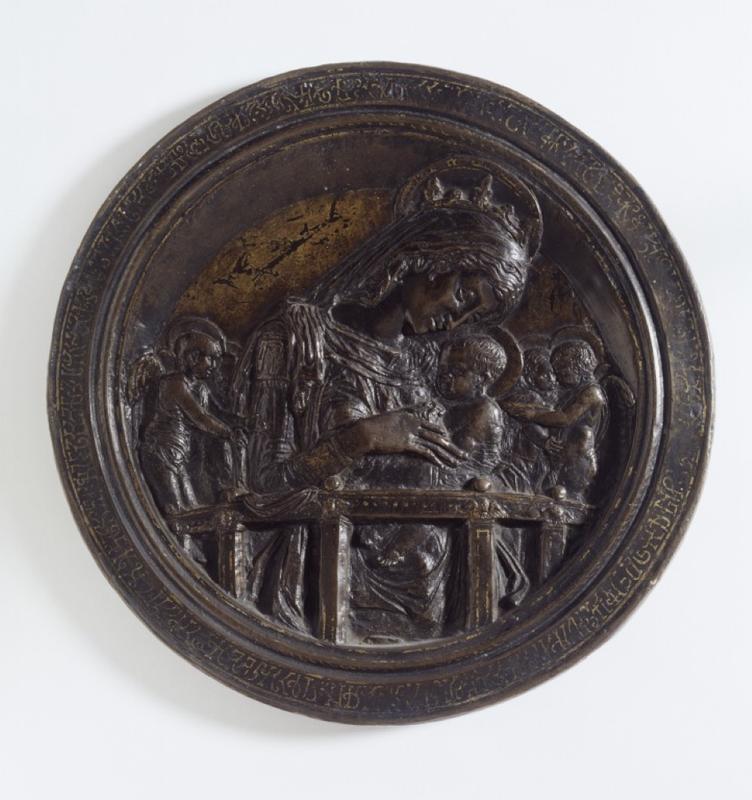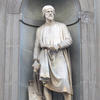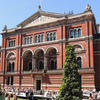More about Virgin and Child with Four Angels

Contributor
Donatello's Virgin and Child is an unusual and special work, once owned by the ailing artist's doctor, Giovanni Chellini.
To echo this provenance, the Italian name for it is the Chellini Madonna, and other English names include Madonna and Child with Four Angels and the Chellini Roundel. "Roundel" is a fancy word for a circular symbol, like the logos for Target or BMW, and, in a number of ways, although we know very little about this work itself, Donatello masterfully anticipates the world of mass production with the design of the work's obverse side, which features a hollow space that would allow someone to make a reproduction of it. Such a reproduction would be either glass or stucco, depending on how you translate Chellini's description of it. It seems like every idea about the roundel has been roundly criticized by one author or another. Mathias Paoletti, who writes articles for an Italian coin-collecting journal, wonders why San Marino and Italy both chose Donatello's David for their commemorative two-Euro coins and gave this work, which the artist originally designed in a coin shape with an option for mass production, the pass? Where's the love? The answer is probably as simple as brand recognition, propaganda, optics, PR, or whatever we're calling it nowadays: more people immediately recognize David, David is the superstar with his own dressing room and an army of assistants, while this work waits in the lobby.
It looks like a coin and walks like a coin, but since it's a one-of-a-kind, it wasn't a coin until the Isle of Man, a "self-governing British Crown dependency," (a legal definition with a nice challenging double negative) made its image into one. It was very rare, in Donatello's days, for an artist to make a two-sided work useful for the production of copies, and, although Chellini's writing seems to imply that Donatello gifted him this work in gratitude for services in the treatment of an illness, Patricia Lee Rubin suggests, convincingly, and contrary to nearly every author on this work, that it was not simply an exchange situation but a shining example of a gift economy, a non-monetary system of relationships. Rubin suggests that Donatello may have paid Chellini in cash or credit for his medical treatment, or Chellini could have treated the elderly genius for free, but this roundel was not part of the transaction. Giving for the sake of giving? I guess stranger things have happened.
In his twilight years, Donatello was interested in giving us ways to reproduce his legacy and recognized that granting the right to make copies of his work, original ones, no less, was one of the most important ways to extend his influence beyond his lifetime.
Sources
- "ART VIEW; SCHOLARSHIP OBSCURES THE GENIUS OF DONATELLO." The New York Times, Dec. 1, 1985, https://www.nytimes.com/1985/12/01/arts/art-view-scholarship-obscures-t….
- Cooper, Donal, and Marika Leino. Depth of Field: Relief Sculpture in Renaissance Italy. Oxford: Peter Lang, 2007.
- Drogin, David J. Patronage and Italian Renaissance Sculpture. London: Routledge, 2017.
- Frederiksen, Rune, and Eckart Marchand. Plaster Casts: Making, Collecting and Displaying from Classical Antiquity to the Present. Berlin: Walter de Gruyter, 2010.
- Paoletti, Mathias. "DONATELLO E LA 'MADONNA CHELLINI' APPRODANO SULL’ISOLA DI MAN." Il Giornale della Numismatica, Mar. 8, 2016, https://www.ilgiornaledellanumismatica.it/donatello-e-la-madonna-chelli….
- Pope-Hennessy, Sir John Wyndham. The Study and Criticism of Italian Sculpture. New York: Metropolitan Museum of Art, 1980.
- Rubin, Patricia Lee. Images and Identity in Fifteenth-century Florence. New Haven: Yale University Press, 2007.
Featured Content
Here is what Wikipedia says about Chellini Madonna
The Virgin and Child with Four Angels, also known as the Chellini Madonna, is a bronze roundel by the Florentine artist Donatello in the Victoria and Albert Museum, London.
The roundel was given by Donatello to his doctor Giovanni Chellini in 1456. This was documented in the physician's account book on 27 August 1456: "while I was treating Donato called Donatello, the singular and principal master in making figures of bronze of wood and terracotta... he of his kindness and in consideration of the medical treatment which I had given and was giving for his illness gave me a roundel the size of a trencher in which was sculpted the Virgin Mary with the Child at her neck and two angels on each side." The reverse of the roundel is hollowed out, creating a mould for casting replicas of the image in molten glass. In order to test out this unique feature, copies of the roundel were made from which glass versions were cast.
-
Glass mould of the Chellini Madonna
Check out the full Wikipedia article about Chellini Madonna












